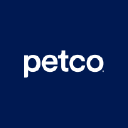Why Consumers Have Been Increasing Spending in This Sector Since 1994
Submitted by William Briat as part of our contributors program.
Why Consumers Have Been Increasing Spending in This Sector Since 1994
The U.S. economy is weak. Everyone knows it. We just don’t know where to lay the blame. Businesses on the S&P 500 have been using the weather as an economic scapegoat. And not a small number, either.
- A 3x Expected Rise In Mounjaro Sales Is Likely To Drive Eli Lilly’s Q1
- What Should You Do With Danaher Stock At $250 After Q1 Beat?
- Will A Macau Recovery Drive MGM Stock Higher Following Q1 Results?
- Lockheed Martin Stock Will Likely Remain In Focus After A Stellar Q1
- Up 17% YTD, What To Expect From eBay Q1 Results?
- Rising 21% This Year, What Lies Ahead For Exxon Stock Following Q1 Earnings?
Between January 1 and March 12, 2014, 195 companies on the S&P 500 used the term “weather” at least once in their conference calls. This represents an 81% increase over the 108 companies that mentioned the weather in their conference calls in the same period last year. (Source: “How many S&P 500 companies have commented on the weather?” FactSet, March 14, 2014.)
And if you want to not-so-subtly warn investors things aren’t looking too good, just blame the weather. The estimated earnings growth rate for the S&P 500 this week is an anemic 0.3%. That’s down slightly from a growth rate for the S&P 500 stocks of 0.4% last week, but it’s like night and day when compared to the December 31, 2013 Q1 earnings growth rate forecast of 4.4%.
Not a big surprise when you consider 84% of all companies on the S&P 500 that have issued earnings-per-share (EPS) guidance have revised it lower. That’s well above the five-year average of 64%. And, for comparison’s sake, during the first quarter of 2013, 78% of companies on the S&P 500 did so.
Also Read: NYSE holidays 2014
Weather aside, it’s quite possible S&P 500 companies aren’t doing that well because the U.S. economy just isn’t gaining traction. Unemployment remains high, wages are stagnant, consumer confidence levels are down, personal debt levels are up, and housing and auto sales have been disappointing.
Even though February retail sales were up 1.5% year-over-year, it was the fourth straight year of declining February sales and the second-worst reading since February 2009, when the U.S. economy was in the midst of the economic meltdown.
Yet, in spite of the bleak economic outlook, disappointing first-quarter results, and a financially tapped consumer, Americans are not willing to cut corners when it comes to their pets.
According to the 2013—2014 APPA National Pet Owners Survey, 68% of U.S. households own a pet, which translates into roughly 82.5 million homes. The first time the survey was conducted in 1988, 56% of U.S. households owned a pet. (Source: “Pet Industry Market Size & Ownership Statistics,” American Pet Products Association web site, March 2014.)
Today, there are an estimated 95.6 million cats and 83.3 million dogs currently being pampered in the U.S. There are also 158.6 million fish, 20.6 million birds, 18.1 million small animals, 11.6 million reptiles, and 8.3 million horses.
According to the American Pet Products Association, we spent a record $55.7 billion on the pet industry in 2013; that represents a roughly four-percent annual increase every year since 1994, when the data was first tracked. And pet industry spending is expected to continue to rise five percent to $58.51 billion in 2015.
Food accounted for the biggest part of spending in 2013—$21.57 billion. Other pet industry service spending includes $14.37 billion for veterinary care, $13.14 billion for supplies and over-the-counter medicines, $2.23 billion for live animals, and $4.41 billion for other services. Those “other services”—including grooming, boarding, training, and pet-sitting?showed the largest annual gain of 6.1%.
Where should investors wanting to take advantage of the U.S. pet industry turn? S&P 500-listed PetSmart, Inc. (NASDAQ/PETM) is the top specialty retailer of pet food and supplies in the U.S. Another leader in the U.S. pet industry is VCA Antech, Inc. (NASDAQ/WOOF); the company runs more than 600 veterinary hospitals and diagnostic labs in 41 states and three Canadian provinces.
Finally, two big pet industry leaders that should perform even better when the economy gains traction are MWI Veterinary Supply, Inc. (NASDAQ/MWIV) and IDEXX Laboratories, Inc. (NASDAQ/IDXX).
This article Why Consumers Have Been Increasing Spending in This Sector Since 1994 was originally published at Daily Gains Letter
